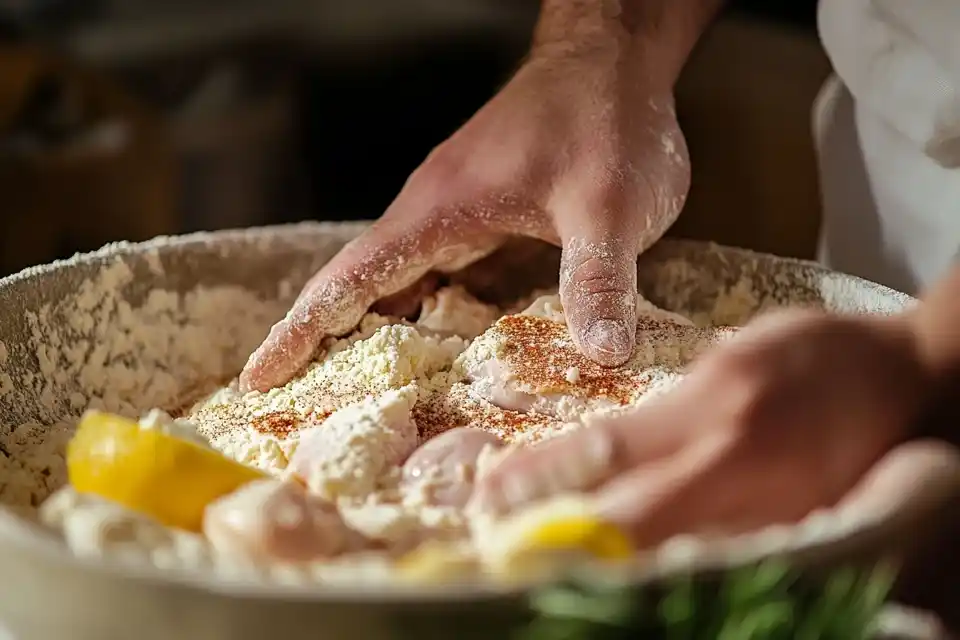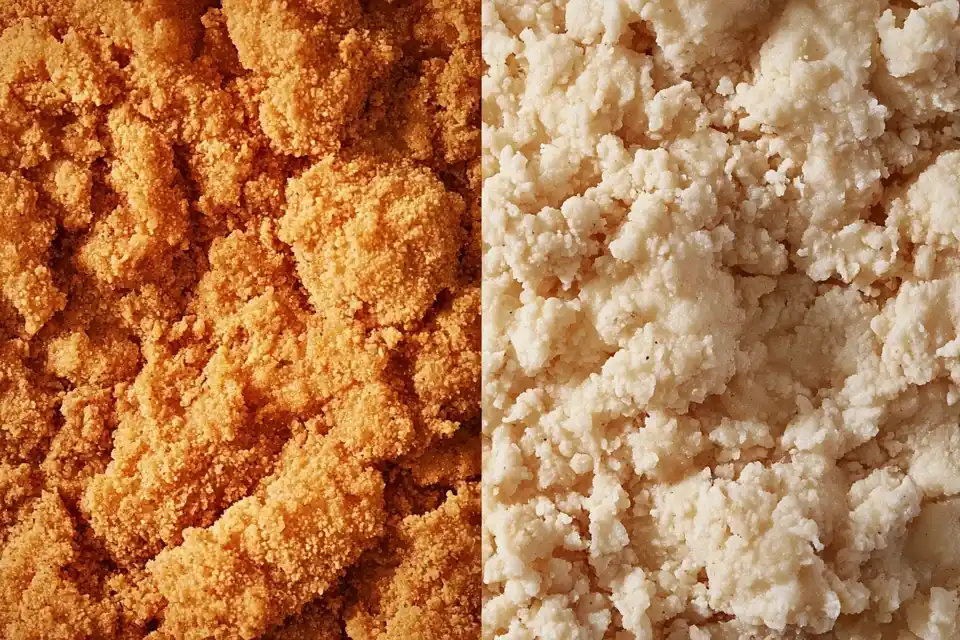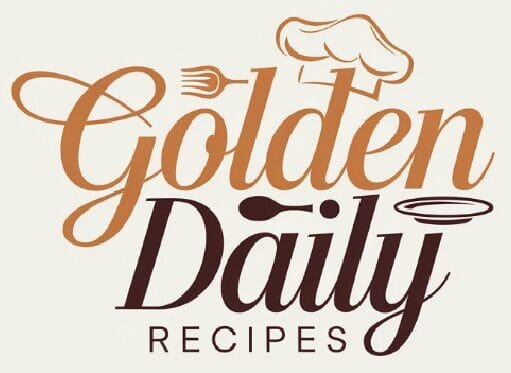When it comes to making perfectly crispy and flavorful fried chicken, one question always sparks debate: Should you season the chicken directly, or should you season the flour? If you’ve ever found yourself scratching your head in the kitchen, wondering which method leads to the most delicious bite, you’re not alone.
Some cooks swear by seasoning the chicken to infuse deep flavor, while others argue that seasoning the flour ensures a well-balanced and crispy coating. So, which method is actually better? The truth is, both techniques have their advantages—and understanding the science behind them can transform your fried chicken game forever.

In this article, we’ll dive into the pros and cons of seasoning the chicken vs. seasoning the flour. We’ll also explore expert opinions, common mistakes, and pro tips to help you achieve restaurant-quality results at home. Ready? Let’s crack this case wide open!
“Cooking is all about layering flavors. Whether you season the chicken or the flour—or both—what matters is understanding the impact each step has.” — Chef Antonio Ramirez
Table of Contents
Understanding the Art of Seasoning
Before we jump into the debate, let’s talk about seasoning itself. What makes seasoning so important in cooking? Well, think of food like a blank canvas—seasoning is your paint. Without it, everything is just bland and lifeless.
Why Seasoning Matters in Cooking
Seasoning isn’t just about adding salt and pepper. It’s about building layers of flavor that elevate a dish from average to mouthwatering. When seasoning is done right, it:
- Enhances the natural taste of the ingredients
- Adds depth and complexity to the dish
- Creates a balance between savory, sweet, sour, and spicy elements
- Helps develop a crispy, golden-brown crust in fried foods
But here’s the thing—seasoning isn’t just about flavor. It also affects texture, aroma, and moisture. This is why the way you apply seasoning to chicken (or its coating) can completely change the outcome.
For tips on achieving juicy and flavorful chicken, check out How Do You Keep Chicken Cutlets from Drying Out?.
The Science Behind Seasoning: Chicken vs. Flour
Now, let’s get into the real discussion. What happens when you season chicken directly? And what happens when you season the flour instead? Let’s break it down.
How Seasoning Affects Texture and Taste
Seasoning works by interacting with the proteins and moisture in food. When you season chicken directly, the salt and spices penetrate the meat, enhancing its natural flavor. This is why marinades and rubs are so effective—they give the seasoning time to work its magic.
On the other hand, seasoning the flour distributes flavors more evenly across the crispy coating. This means that every bite is seasoned, rather than just the chicken itself.
“Great fried chicken isn’t just about the meat; it’s about the crunch, the seasoning, and the contrast between crispy and juicy.” — Chef Lisa Bennett
The Role of Salt, Spices, and Herbs in Chicken Dishes
Different seasonings affect food in different ways. Here’s a quick guide to some common ingredients used in fried chicken seasoning:
| Seasoning | Effect on Chicken |
|---|---|
| Salt | Enhances natural flavor, draws out moisture, helps proteins break down |
| Black Pepper | Adds a slight heat and depth of flavor |
| Paprika | Gives a smoky, slightly sweet flavor and enhances color |
| Garlic Powder | Adds savory depth without overwhelming the dish |
| Onion Powder | Brings mild sweetness and umami |
| Cayenne Pepper | Kicks up the heat for those who love spice |
| Oregano & Thyme | Adds an earthy, aromatic element |
Now that we understand how seasoning works, let’s dive deeper into the **pros and cons of seasoning the chicken vs. seasoning the flour.**
Seasoning the Chicken: Benefits and Drawbacks
Many chefs and home cooks prefer to season the chicken directly before dredging it in flour. Why? Because it allows the seasoning to penetrate the meat, creating a deeper, more intense flavor.
How Seasoning Chicken Before Frying Enhances Flavor
When you season chicken before coating it in flour, you’re essentially building flavor from the inside out. The salt helps break down proteins, making the meat more tender and juicy. Spices also have a chance to cling to the chicken’s surface, giving it an extra punch of flavor.
Here’s a simple **seasoning mix** you can use for pre-seasoning your chicken:
| Ingredient | Quantity |
|---|---|
| Salt | 1 tsp |
| Black Pepper | 1/2 tsp |
| Paprika | 1 tsp |
| Garlic Powder | 1 tsp |
| Onion Powder | 1 tsp |
| Cayenne Pepper | 1/2 tsp (optional for heat) |
Common Mistakes When Seasoning Chicken Directly
While seasoning the chicken has its advantages, there are some pitfalls to watch out for:
- Over-seasoning: Too much salt can draw out moisture, making the chicken dry.
- Under-seasoning: If you don’t season enough, the flavor won’t carry through the flour coating.
- Not letting the seasoning absorb: Seasoning needs time to work, so let the chicken sit for at least 15–30 minutes before frying.
For more guidance on cooking seasoned chicken, check out How to Cook Chicken Cutlets: The Ultimate Guide.
How Long Should You Let Chicken Marinate?
For best results, let the seasoned chicken rest for at least 30 minutes (or even overnight for maximum flavor absorption). If you’re in a hurry, at least 10–15 minutes will help.
Now that we’ve covered the **pros and cons of seasoning the chicken**, let’s move on to **seasoning the flour**—another method that has its own unique benefits!
Seasoning the Flour: Benefits and Drawbacks
While seasoning the chicken directly adds deep flavor to the meat, seasoning the flour has a different advantage—it ensures that every crispy bite of the coating is infused with spices. If you’ve ever bitten into a beautifully fried chicken piece only to find the crust bland, you know why seasoning the flour is just as important!

How Seasoned Flour Impacts Crispy Coating
Flour isn’t just a vessel for crispiness—it’s also a carrier for flavor. When you season the flour before coating the chicken, the spices distribute evenly across the surface, creating a well-balanced bite. This method is often preferred in **Southern-style fried chicken recipes**, where a heavily seasoned, crispy crust is key.
Here’s a simple **seasoned flour mix** to try:
| Ingredient | Quantity |
|---|---|
| All-Purpose Flour | 2 cups |
| Salt | 1 tsp |
| Black Pepper | 1/2 tsp |
| Paprika | 1 tsp |
| Garlic Powder | 1 tsp |
| Onion Powder | 1 tsp |
| Cayenne Pepper | 1/2 tsp (optional for extra heat) |
| Oregano (dried) | 1/2 tsp |
| Thyme (dried) | 1/2 tsp |
When the chicken is coated in seasoned flour, the seasoning doesn’t just stay on the surface—it integrates into the crispy shell as it fries. This results in **a well-balanced bite where the coating is just as flavorful as the meat inside.**
“Seasoning the flour is a game-changer. It ensures every crispy bite is just as flavorful as the last.” — Chef Monica Hayes
Common Mistakes When Seasoning Flour
Seasoning the flour might sound foolproof, but there are some **common pitfalls** that can lead to bland or overpowering fried chicken. Here’s what to watch out for:
- Not seasoning the flour enough: If you only rely on the chicken for flavor, the crust might taste plain.
- Using too much seasoning: Overloading the flour with salt or spices can create an overwhelming taste.
- Uneven seasoning distribution: Always mix your seasoning thoroughly to prevent some bites from being over-seasoned while others remain bland.
- Forgetting the double-coating method: If you want extra crispiness, consider dredging the chicken twice—first in seasoned flour, then in a liquid (buttermilk or egg wash), and again in the flour.
Balancing Spices to Avoid Bland or Overpowering Taste
Achieving the perfect flavor balance is all about **experimenting with spice ratios**. Here are some quick **pro tips**:
- For a more subtle flavor: Use equal parts garlic powder, onion powder, and paprika.
- For a smoky, bold taste: Add more paprika and black pepper.
- For heat lovers: Increase the cayenne pepper and black pepper.
- For a herby touch: Add oregano, thyme, or rosemary to the flour mix.
Comparing Both Methods: Which One is Better?
Now that we’ve explored both techniques, the big question remains: **Is it better to season the chicken or the flour?** The answer? It depends on what you’re looking for in your fried chicken.
| Method | Pros | Cons |
|---|---|---|
| Seasoning the Chicken | Infuses deep, rich flavor into the meat Enhances tenderness with salt penetration Works well with marination | Coating might taste bland if flour isn’t seasoned Requires resting time for best results |
| Seasoning the Flour | Ensures an evenly flavored crispy coating Great for those who love a bold, well-seasoned crust Doesn’t require extra waiting time | Meat inside might be less flavorful Seasonings can burn in hot oil if overused |

So, which method should you choose? The truth is, **why not use both?**
The Best Approach: Why Not Both?
The secret to the **best fried chicken** isn’t choosing one method—it’s **layering flavors** by using both. By seasoning the chicken **AND** the flour, you get the best of both worlds:
- Flavor that penetrates deep into the meat.
- A crispy, well-seasoned crust that’s never bland.
- A perfectly balanced bite, every single time.
For air frying options, check out Can You Air Fry Thin Sliced Chicken Breast?.
Here’s how to do it step by step:
Step-by-Step Guide to Combining Both Techniques
- Season the chicken first: Use salt, pepper, paprika, and your favorite spices. Let it sit for 15–30 minutes (or overnight for deeper flavor).
- Prepare a seasoned flour mix: Use flour, salt, black pepper, paprika, garlic powder, and onion powder. Mix well.
- Double coat for extra crunch: Dredge the chicken in the seasoned flour, dip it in buttermilk or egg wash, then coat it again in flour.
- Fry at the right temperature: Keep the oil at **350°F (175°C)** to ensure a crispy, golden-brown crust without burning the seasoning.
“The best fried chicken isn’t just about one step—it’s about layering flavors to get the ultimate crispy, juicy bite.” — Chef James Carter
Final Thoughts: What’s the Ultimate Choice?
At the end of the day, whether you season the chicken, the flour, or both depends on your personal preference. If you love **deeply flavorful chicken**, season it before frying. If you prefer a **well-seasoned crispy crust**, focus on the flour. But if you want **next-level fried chicken**, combining both methods is the way to go.
So, next time you’re in the kitchen, give both techniques a try and see which one works best for your taste buds. **Happy frying!**

Troubleshooting Common Issues in Seasoning
Even when following all the right steps, things can still go wrong. If your fried chicken isn’t coming out as flavorful or crispy as you’d like, let’s troubleshoot some of the most common problems and solutions.
Chicken is Bland Even After Seasoning: What Went Wrong?
There’s nothing worse than biting into a beautifully fried piece of chicken, only to find that the flavor is missing. Here’s why this might be happening:
- Not enough seasoning: If your chicken still tastes plain, you may not be adding enough salt or spices to either the meat or the flour.
- Not letting the seasoning absorb: Give the seasoning time to penetrate the meat by letting it rest for at least 30 minutes before frying.
- Not seasoning both the chicken and the flour: The best results come from layering flavors at multiple stages.
Flour Seasoning Doesn’t Stick: How to Fix It
One major frustration when frying chicken is when the seasoned coating **won’t stick properly** and falls off while cooking. Here’s how to fix it:
- Pat the chicken dry first: Excess moisture prevents the flour from clinging properly.
- Use a binding agent: Dipping the chicken in buttermilk or an egg wash before dredging it in flour creates a better surface for adhesion.
- Press the flour onto the chicken: Instead of lightly dusting, press the seasoned flour firmly onto the meat.
- Let it rest: After coating, let the chicken sit for 10–15 minutes before frying so the breading can set.
Overpowering Spices: How to Adjust the Seasoning Ratio
If your fried chicken is coming out **too salty or overly spiced**, the key is adjusting your ratios. Here are some quick tips:
- Cut back on salt: If your chicken is too salty, reduce the salt in both the seasoning and flour.
- Balance strong spices: If cayenne, paprika, or black pepper are overpowering, balance them with a little sugar or cornstarch.
- Use a mild flour blend: Mixing cornstarch with your seasoned flour can help tone down strong flavors while maintaining crispiness.
Best Spices and Seasonings for Fried Chicken
Fried chicken is all about **bold flavors** and **crunchy textures**. The best spice blends balance savory, smoky, and slightly sweet elements. Here’s a breakdown of the best seasonings for the perfect fried chicken:
| Seasoning | Flavor Profile | Best Usage |
|---|---|---|
| Salt | Enhances natural flavors | Essential for seasoning both chicken and flour |
| Black Pepper | Earthy, mild heat | Great for both seasoning the meat and the coating |
| Paprika | Smoky, slightly sweet | Perfect for color and flavor in the coating |
| Garlic Powder | Rich umami flavor | Works well in flour and as a dry rub |
| Onion Powder | Mild sweetness, savory | Adds depth to both chicken and flour |
| Cayenne Pepper | Spicy heat | Best used sparingly for a kick |
| Oregano & Thyme | Earthy and aromatic | Great for adding depth to the seasoning blend |
| MSG (Optional) | Boosts umami flavor | Used in many restaurant-style fried chicken recipes |
“The right spice blend turns ordinary fried chicken into something extraordinary.” — Chef Daniel Harper
Final Thoughts: What’s the Ultimate Choice?
At the end of the day, the best method depends on what kind of fried chicken you’re aiming for. Here’s a quick summary:
- Want deeply flavored meat? Season the chicken before coating.
- Want a well-seasoned, crispy crust? Season the flour.
- Want the best of both worlds? Use both methods to layer flavors.
By combining both techniques, you ensure that every bite of your fried chicken is packed with flavor—inside and out.
FAQs
Can You Over-Season Chicken Before Frying?
Yes! Too much salt can dry out the meat, and excess spices can create a bitter taste. Stick to a balanced mix and adjust according to your taste.
Should You Season Both the Chicken and Flour for Baking?
Yes, even when baking chicken, seasoning both the meat and the coating (breadcrumb mix or flour) ensures a balanced flavor.
Does Seasoning the Flour Work for Grilled Chicken?
Not really. Since grilled chicken doesn’t have a crispy coating, it’s best to season the meat directly rather than the flour.
What’s the Best Oil to Fry Seasoned Chicken?
The best oils for frying chicken are those with **high smoke points**, such as:
- Peanut oil
- Canola oil
- Vegetable oil
- Sunflower oil
These oils ensure a crispy crust without burning the seasoning.
Ready to Cook? Try This Simple Seasoning Blend
Now that you know how to season your chicken the right way, here’s a quick blend to get started:
| Ingredient | Quantity |
|---|---|
| Salt | 1 tsp |
| Black Pepper | 1/2 tsp |
| Paprika | 1 tsp |
| Garlic Powder | 1 tsp |
| Onion Powder | 1 tsp |
| Cayenne Pepper | 1/2 tsp |
“Seasoning is what separates ordinary fried chicken from unforgettable fried chicken.” — Chef Julia Torres
Final Words
Whether you season the chicken, the flour, or both, **the key is balance**. Experiment with different techniques and spice blends to find what works best for your taste buds. The next time you’re frying up a batch of chicken, try layering the seasoning at every step—and get ready for the best fried chicken you’ve ever had! 🍗🔥
**Happy cooking!** 🎉

